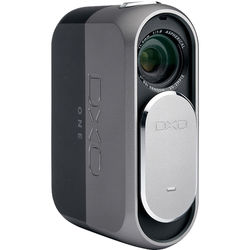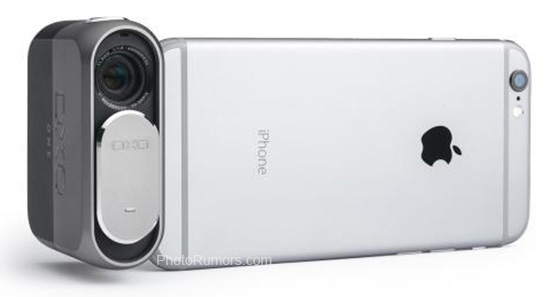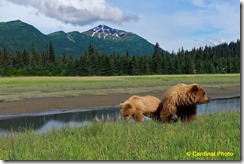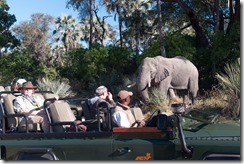Submitted by David Cardinal on Wed, 09/30/2015 - 11:18
One of the most interesting features of DxO’s new camera (#dxoone) is the new SuperRAW image format it supports. SuperRAW is a compound image format, with each image file containing four RAW images taken in quick succession. When the ONE is set to capture images in SuperRAW, the four individual RAW images are shot and stored in a single, proprietary, image file (with a .DXO extension). When processed by DxO’s own OpticsPro or FilmPack software, spatial and temporal noise reduction are applied to the four images, with the resulting output image having lower noise – and better overall image quality -- than any of the four individual captures.
Submitted by David Cardinal on Tue, 09/15/2015 - 10:42
 As regular readers know, I’ve been having a lot of fun shooting with a alongside my more-traditional DSLR and compact cameras over the last few months. Until now, the software and firmware have been pre-release versions, so I haven’t been able to take you through them in as much detail as I would have liked, or post sample RAW and SuperRAW images. Now that the ONE is starting to ship that’s all changed, so here’s a more thorough look at the camera and its companion software. More importantly, here are some of the first real RAW and SuperRAW images that are available for you to evaluate on your own. #dxoone
As regular readers know, I’ve been having a lot of fun shooting with a alongside my more-traditional DSLR and compact cameras over the last few months. Until now, the software and firmware have been pre-release versions, so I haven’t been able to take you through them in as much detail as I would have liked, or post sample RAW and SuperRAW images. Now that the ONE is starting to ship that’s all changed, so here’s a more thorough look at the camera and its companion software. More importantly, here are some of the first real RAW and SuperRAW images that are available for you to evaluate on your own. #dxoone
Submitted by David Cardinal on Tue, 09/01/2015 - 12:35
For the last couple months I’ve been traveling with both a (that fits in my shirt pocket) and a (that barely fits in a cargo pocket). I’ve had a lot of fun with both cameras. While they have very similar sensors, they are different in almost every other way. Since they are both likely to be popular choices for image lovers looking for the ultimate compact camera, here are my thoughts on the very new ONE (you can ), and how it contrasts with a traditional high-end point-and-shoot… #dxoone
Submitted by David Cardinal on Fri, 07/10/2015 - 13:41
I had so much fun with my DxO ONE in Africa, that I brought it half-way around the world with me to Alaska to use as my “grabshot” camera on my Brown Bear photo safaris. We had a cooperative mother bear with two cubs in a beautiful setting, that my big telephoto was never going to capture all in the same frame. So I quickly snapped this image, using only the DxO ONE. It was processed using my default “travel photo” preset and cropped & rotated to square up the horizon, and then downsized to 1920 pixels so I could upload it over our satellite link:
Submitted by David Cardinal on Tue, 06/30/2015 - 23:36
Clearly telephotos dominate when we think of safari lenses. But sometimes the most compelling images are the ones that show both ourselves and the animals. Having a small, quick, camera that can record the moment is a huge win. I took a number of such shots with the DxO ONE on our just-finishing safari to Botswana and Zimbabwe, but this was one of my favorites:
Submitted by David Cardinal on Sat, 06/20/2015 - 04:07
The Melrose Arch mall and environs in Johannesburg provided some good locations to capture images for the new DxO ONE. To make sure the camera was doing as much of the work as possible, I left it on Auto mode for all but a couple of the shots. Here’s a gallery of some of my favorites (NOTE: This is a pre-production camera, so final image quality will be different when the unit ships to customers) – Images are all copyrighted, so ask for permission before using them)…
Submitted by David Cardinal on Thu, 06/18/2015 - 06:58
 I’ve been working with a very exciting new camera that I’m happy to be able to tell you about now that it has been announced. It is called simply the ONE, from image processing software vendor DxO. DxO has used its industry-leading expertise in evaluating cameras and lenses, and creating image processing pipelines, to create a camera that works seamlessly with your iPhone, but produces much better images. The ONE is built around a 1-inch sensor – far larger than the ones found in mobile devices, including the one in the iPhone. It’s the same size sensor that’s found in much larger, high-end, compact cameras like the – that are also more expensive.
I’ve been working with a very exciting new camera that I’m happy to be able to tell you about now that it has been announced. It is called simply the ONE, from image processing software vendor DxO. DxO has used its industry-leading expertise in evaluating cameras and lenses, and creating image processing pipelines, to create a camera that works seamlessly with your iPhone, but produces much better images. The ONE is built around a 1-inch sensor – far larger than the ones found in mobile devices, including the one in the iPhone. It’s the same size sensor that’s found in much larger, high-end, compact cameras like the – that are also more expensive.


 As regular readers know, I’ve been having a lot of fun shooting with a
As regular readers know, I’ve been having a lot of fun shooting with a ![1434734130000_IMG_506470[1] 1434734130000_IMG_506470[1]](http://www.cardinalphoto.com/sites/default/files/1434734130000_IMG_506470%5B1%5D_thumb.jpg)



 I’ve been working with a very exciting new camera that I’m happy to be able to tell you about now that it has been announced. It is called simply the ONE, from image processing software vendor DxO. DxO has used its industry-leading expertise in evaluating cameras and lenses, and creating image processing pipelines, to create a camera that works seamlessly with your iPhone, but produces much better images. The ONE is built around a 1-inch sensor – far larger than the ones found in mobile devices, including the one in the iPhone. It’s the same size sensor that’s found in much larger, high-end, compact cameras like the
I’ve been working with a very exciting new camera that I’m happy to be able to tell you about now that it has been announced. It is called simply the ONE, from image processing software vendor DxO. DxO has used its industry-leading expertise in evaluating cameras and lenses, and creating image processing pipelines, to create a camera that works seamlessly with your iPhone, but produces much better images. The ONE is built around a 1-inch sensor – far larger than the ones found in mobile devices, including the one in the iPhone. It’s the same size sensor that’s found in much larger, high-end, compact cameras like the 